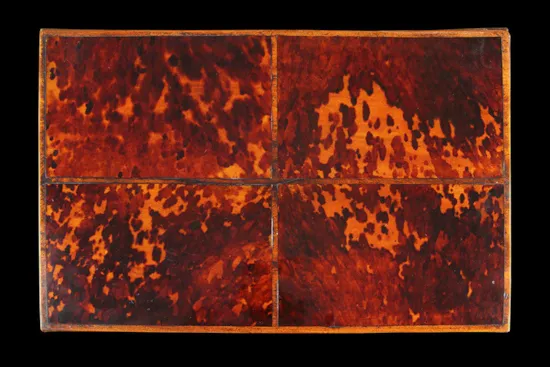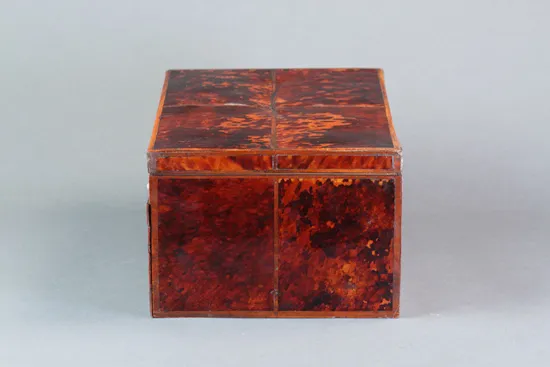Regency Tortoiseshell Veneered Conchologist’s Cabinet
A Regency Tortoiseshell Veneered Conchologist’s Cabinet containing a Collection of Seashells Arranged in Five Drawers Sectioned with Gold Braided Paper Rods showing some rare specimens such as the ‘Precious Wentletrap’
Old ink inscribed labels naming some ‘Harlequin Cowry’ ‘Music Shell’ ‘Tulip or Radiated Teller’
Circa 1800 - 1820
Size: 17.5cm high, 38cm wide, 25.5cm deep - 7 ins high, 15 ins wide, 10 ins deep
Old ink inscribed labels naming some ‘Harlequin Cowry’ ‘Music Shell’ ‘Tulip or Radiated Teller’
Circa 1800 - 1820
Size: 17.5cm high, 38cm wide, 25.5cm deep - 7 ins high, 15 ins wide, 10 ins deep
Shell collecting in one form or another has been a passion of mankind for centuries. Few natural objects have been collected for so long or been treasured so much. Shells are associated with pre-Dynastic Egypt, Pre-historic Europe, Pre-historic Mexico and North America and pre-Columbian Ecuador. The cult of the shell probably originated with the cowry which became used as currency and for personal adornment. Later, larger shells were used as trumpets and were important in initiation ceremonies and temple worship. The art of the classical world is strewn with scallop shells and the earliest writings on molluscs are those of Aristotle (384 - 322 BC). From Cicero’s writings (De Oratoic vol. 2, VI, p22) it is known that two famous Roman consuls, Laelius (b. 186 BC) and Scipio (b. 185 BC) found relaxation from the cares of war and government in collecting shells. Perhaps the first large scale field trip in search of shells was undertaken by the Romans as a military exercise. Caligula (AD 12 - 41), known as Caius Caesar, marched into Gaul in 40 AD and led his troops down to the sea as if to embark on an invasion of Britain, but having drawn them up in battle array, he ordered them to collect shells which he then proclaimed ‘the spoils of conquered ocean’ (Suetonius: Caligula XI vi)
Regency Tortoiseshell Veneered Conchologist’s Cabinet

SOLD


































YOU MAY ALSO LIKE

